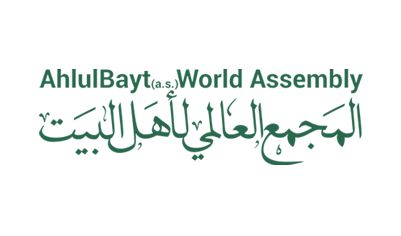Resistance, unlike surrender, brings pride and shapes destiny: Cleric
About the characteristics of Martyr Sayed Hassan Nasrallah, Safdari, a professor of seminary and university, stated, “Sayed Hassan Nasrallah’s art was to sustain the resistance culture. Sayed Hassan Nasrallah was a cultivator of resistance. Resistance, unlike surrender, brings pride and shapes destiny.”
ABWA Official Website – In the conference “Resistance and Security”, which was held in the meeting hall of the AhlulBayt (a.s.) World Assembly in Qom, Hojat al-Islam Hossein Safdari, professor of seminary and university, said, “Resistance is the thought of standing against threats and enemies.”
.jpg)
“The threat may be objective or probable. But resistance has requirements, and it should not be taken that simply standing against the enemy is enough. Because resistance is a multidimensional equation,” he continued.
“Security means the absence of threats,” the seminary and university professor added, “Here, the question arises whether resistance achieves security. Security means a feeling of stability and lack of concern. When, for example, the United States formulates its security policy, it considers all developments regarding its stability.”
“Considering the points mentioned above, by studying the contemporary history of Islamic countries, we see that they lacked territorial, cultural, and religious security during the last few centuries. There are two patterns against insecurity and threat. The first pattern crystallized before the Islamic Revolution of Iran was the submission process, during which Islamic countries surrendered to the process of occupying Palestine. According to the Oslo Accords, “various issues, including water and borders, will be discussed later!” As a result of the Oslo Accords, since its signing, the Palestinians have continuously retreated into the West Bank,” he continued.
“The second process that became popular after the victory of the Islamic Revolution of Iran was resistance against enemies. The result of this culture was creating a spark in Lebanon and Hezbollah. Hezbollah provided a lot of operational capacity for itself and its allies in other countries. Once the Zionist army came to the center of Beirut and occupied the southern areas of Lebanon. At this time, those who negotiated with the Zionists reached nothing,” said the researcher about the resistance strategy.
About the characteristics of Martyr Sayed Hassan Nasrallah, he stated, “Sayed Hassan Nasrallah’s art was to sustain the resistance culture. Sayed Hassan Nasrallah was a cultivator of resistance. Resistance, unlike surrender, brings pride and shapes destiny.”
“Martyrdom creates progress, and resistance creates deterrence. For enemies, being killed is the end of the road. But according to the enemy, the resistance, despite all its costs, has more power than the first day. So much so that the rock revolution has turned into a missile revolution,” Safdari emphasized.
“Resistance is more likely to succeed than surrender. The logic of Imam Ali (a.s.) is to support the resistance. But in the Oslo Accords, the logic of surrender showed its essence. Egypt had $14 billion before Camp David, but today it has $140 billion in debt. This is an example of the consequences of surrender. Saed Hassan Nasrallah is a symbol of resistance,” he said at the end of his speech.
**************
End/ 345
About the characteristics of Martyr Sayed Hassan Nasrallah, Safdari, a professor of seminary and university, stated, “Sayed Hassan Nasrallah’s art was to sustain the resistance culture. Sayed Hassan Nasrallah was a cultivator of resistance. Resistance, unlike surrender, brings pride and shapes destiny.”
ABWA Official Website – In the conference “Resistance and Security”, which was held in the meeting hall of the AhlulBayt (a.s.) World Assembly in Qom, Hojat al-Islam Hossein Safdari, professor of seminary and university, said, “Resistance is the thought of standing against threats and enemies.”
.jpg)
“The threat may be objective or probable. But resistance has requirements, and it should not be taken that simply standing against the enemy is enough. Because resistance is a multidimensional equation,” he continued.
“Security means the absence of threats,” the seminary and university professor added, “Here, the question arises whether resistance achieves security. Security means a feeling of stability and lack of concern. When, for example, the United States formulates its security policy, it considers all developments regarding its stability.”
“Considering the points mentioned above, by studying the contemporary history of Islamic countries, we see that they lacked territorial, cultural, and religious security during the last few centuries. There are two patterns against insecurity and threat. The first pattern crystallized before the Islamic Revolution of Iran was the submission process, during which Islamic countries surrendered to the process of occupying Palestine. According to the Oslo Accords, “various issues, including water and borders, will be discussed later!” As a result of the Oslo Accords, since its signing, the Palestinians have continuously retreated into the West Bank,” he continued.
“The second process that became popular after the victory of the Islamic Revolution of Iran was resistance against enemies. The result of this culture was creating a spark in Lebanon and Hezbollah. Hezbollah provided a lot of operational capacity for itself and its allies in other countries. Once the Zionist army came to the center of Beirut and occupied the southern areas of Lebanon. At this time, those who negotiated with the Zionists reached nothing,” said the researcher about the resistance strategy.
About the characteristics of Martyr Sayed Hassan Nasrallah, he stated, “Sayed Hassan Nasrallah’s art was to sustain the resistance culture. Sayed Hassan Nasrallah was a cultivator of resistance. Resistance, unlike surrender, brings pride and shapes destiny.”
“Martyrdom creates progress, and resistance creates deterrence. For enemies, being killed is the end of the road. But according to the enemy, the resistance, despite all its costs, has more power than the first day. So much so that the rock revolution has turned into a missile revolution,” Safdari emphasized.
“Resistance is more likely to succeed than surrender. The logic of Imam Ali (a.s.) is to support the resistance. But in the Oslo Accords, the logic of surrender showed its essence. Egypt had $14 billion before Camp David, but today it has $140 billion in debt. This is an example of the consequences of surrender. Saed Hassan Nasrallah is a symbol of resistance,” he said at the end of his speech.
**************
End/ 345

